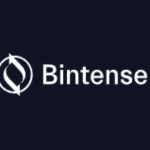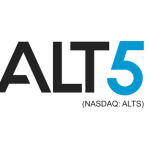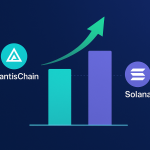Blockchain
Blockchain Interoperability Hits The Right Note For Crypto Payments

Introduction
Blockchain interoperability has emerged as a cornerstone in the evolution of decentralized technologies, particularly in the crypto payment landscape. As the adoption of blockchain continues to grow, the ability of different blockchains to communicate and operate seamlessly has become a critical factor for driving the next wave of financial innovation.
This article explores the advancements in blockchain interoperability, focusing on its transformative impact on crypto payments. From understanding the foundational concepts to delving into its real-world applications, we uncover how this technology is enabling seamless cross-platform transactions and shaping the future of finance.
What Is Blockchain Interoperability?
Blockchain interoperability refers to the ability of different blockchain networks to communicate, exchange data, and share resources effectively. Unlike traditional systems that are centralized and uniform, blockchain ecosystems are often siloed, operating independently without the capacity to interact with other networks.
Interoperability solves this challenge by enabling cross-chain communication, which allows users to:
- Transfer assets between different blockchain networks.
- Share data securely across platforms.
- Facilitate cross-chain smart contracts.
These capabilities not only enhance user experience but also unlock new use cases that were previously impossible due to the lack of cross-chain functionality.
Why Interoperability Matters In Crypto Payments?
The crypto payment ecosystem is a fragmented space, with multiple blockchains offering distinct features and functionalities. Bitcoin, Ethereum, Binance Smart Chain, and other platforms each have their own protocols, tokens, and standards. This diversity, while beneficial for innovation, poses significant challenges when users want to transact across different networks.
Interoperability addresses these challenges by:
Eliminating Friction: Users no longer need to rely on intermediaries or centralized exchanges to transfer assets between chains.
Reducing Costs: By enabling direct peer-to-peer transactions across chains, interoperability minimizes fees associated with conversion and transfer.
Enhancing Speed: Cross-chain solutions reduce the time taken for transactions by eliminating bottlenecks.
Expanding Accessibility: Developers can create applications that work across multiple blockchains, increasing reach and usability.
Key Technologies Driving Blockchain Interoperability
Cross-Chain Bridges
Cross-chain bridges are protocols that connect two or more blockchain networks, enabling users to transfer assets or data seamlessly. For example, a user can move tokens from Ethereum to Binance Smart Chain using a bridge.
Prominent Cross-Chain Bridges
Polygon Bridge: Connects Ethereum with Polygon for low-cost transactions.
Wormhole: Links Solana, Ethereum, and other chains.
Avalanche Bridge: Facilitates transfers between Avalanche and Ethereum.
Sidechains
Sidechains are secondary blockchains that run parallel to the main blockchain. They are designed to interact with the main chain, allowing for interoperability while reducing congestion on the primary network.
Interoperability Standards
Several standards have been developed to enhance blockchain communication:
Inter-Blockchain Communication Protocol (IBC): A standard that allows independent blockchains to transfer data and tokens.
Polkadot’s Parachains: Sub-chains connected to Polkadot’s relay chain, enabling seamless cross-chain communication.
Layer-0 Solutions
Layer-0 solutions, such as Cosmos and Polkadot, are foundational frameworks that enable interoperability by design. They provide the infrastructure for building interconnected blockchain ecosystems.
Real-World Applications In Crypto Payments
Global Remittances
Blockchain interoperability simplifies the process of sending money across borders. Users can transfer funds from one network to another without relying on intermediaries, reducing fees and enhancing speed.
Decentralized Finance (DeFi)
Interoperability enables DeFi platforms to aggregate liquidity from multiple chains, offering users better rates and more investment options. For example, platforms like Thorchain facilitate cross-chain swaps, expanding the DeFi ecosystem.
E-Commerce and Retail
With interoperability, merchants can accept payments in a variety of cryptocurrencies, regardless of the blockchain on which they operate. This reduces barriers for businesses and encourages crypto adoption.
Gaming and NFTs
Interoperability allows gamers and NFT holders to transfer assets across games or marketplaces on different chains. This creates a more dynamic and interconnected gaming ecosystem.
Challenges In Achieving Blockchain Interoperability
Security Risks
Cross-chain solutions, such as bridges, are often targeted by hackers. Ensuring robust security measures is critical to prevent exploits.
Scalability Issues
Interoperability solutions must handle high transaction volumes without compromising speed or cost-efficiency.
Standardization
The lack of universal standards across blockchains makes interoperability complex. Coordinated efforts among developers and platforms are essential for achieving seamless communication.
Regulatory Hurdles
Cross-chain transactions involve multiple jurisdictions, creating legal and regulatory complexities. Transparent policies are needed to foster innovation while ensuring compliance.
The Future Of Blockchain Interoperability
The future of blockchain interoperability is promising, with several advancements on the horizon:
Unified Ecosystems: Projects like Polkadot and Cosmos are paving the way for interconnected blockchain networks, creating a unified ecosystem for developers and users.
AI and Automation: Integrating AI into blockchain interoperability can enhance efficiency and automate cross-chain processes.
Increased Adoption: As interoperability solutions become more robust, mainstream adoption of blockchain for payments, supply chain, and other sectors will grow.
Conclusion
Blockchain interoperability is not just a technological innovation; it is a catalyst for the widespread adoption of cryptocurrencies and decentralized finance. By enabling seamless communication and transactions across blockchain networks, it addresses the limitations of siloed systems and unlocks the full potential of decentralized technologies.
As we move toward a more interconnected digital economy, the advancements in blockchain interoperability will play a pivotal role in shaping the future of finance. For businesses, developers, and users alike, understanding and leveraging this technology is key to staying ahead in the rapidly evolving crypto landscape.










